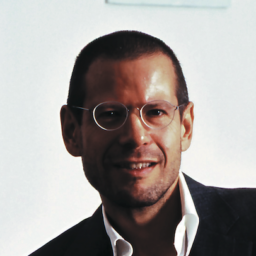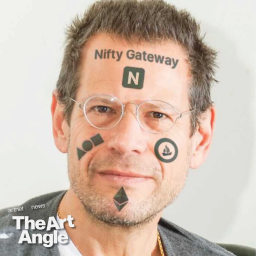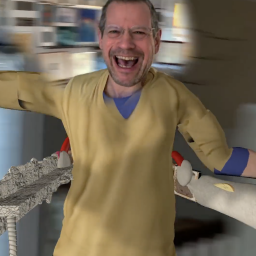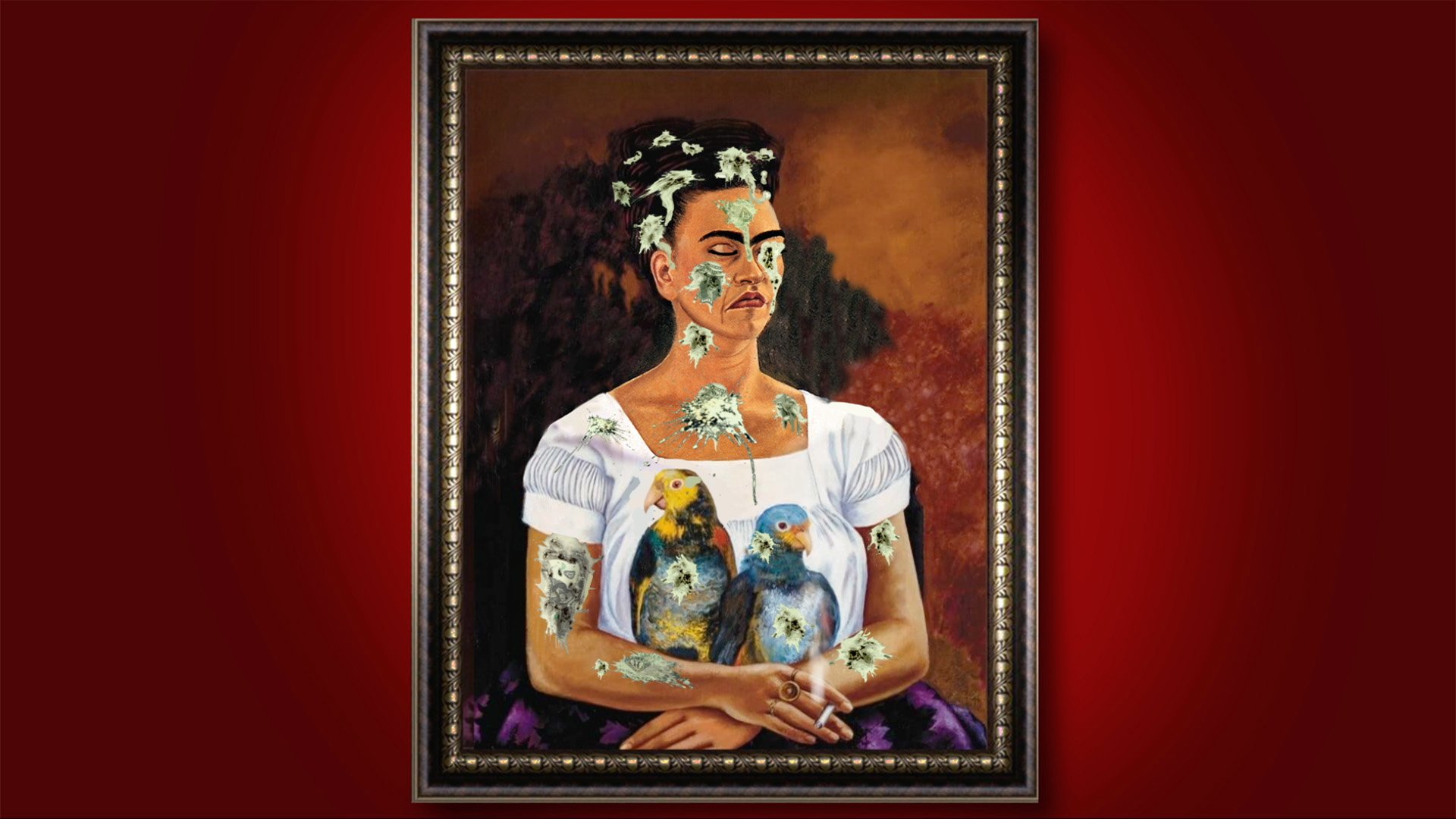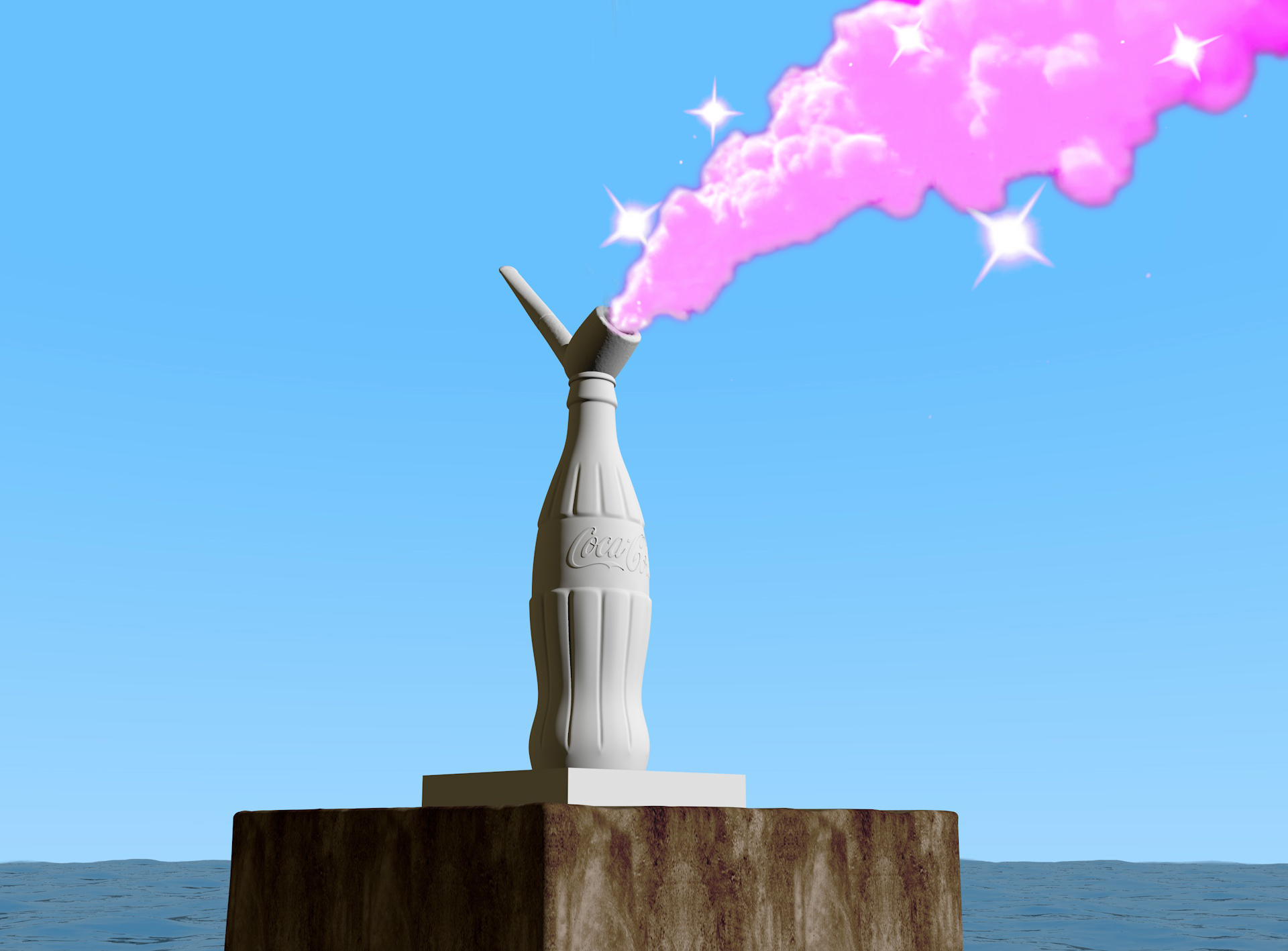The painter Lucien Smith, born in April 1989, crashed out of the gate in a hurry—only to suffer an equally swift, though less desirable crash of an altogether different variety. In November 2013, at the tender age of 24, his first work to appear at auction—a painting entitled Hobbes, The Rain Man, and My Friend Barney/Under the Sycamore Tree—fetched $389,000 in a Philips evening sale. How it got there is anyone’s guess, but urban myth has it that the Murgrabi clan may have had a hand in the proceedings. Since that fateful night, a total of 134 Smiths have changed hands at auction, the most recent being a 36-inch “rain” canvas (from a series of works with paint squirted out of a pressurized spray container, aka fire extinguisher) that sold for about $12,000… versus the $100,000 record price that size once commanded. Most significantly, his 100 highest prices all occurred between the years of 2013-2015, before the zombies of Zombie Formalism—Walter Robinson’s now-infamous term for a generic form of vacuous, easy-on-the-eye abstractionists—died an abrupt, violent death they have yet to re-incarnate from.
At the time, I ruthlessly and relentlessly chronicled the rise and fall of the Zombies, and signaled out Smith as the poster child of the movement. At some stage during that period, my kids Adrian and Kai befriended Lucien at a strip club or something of that ilk during one Art Basel Miami Beach and, surprise, surprise, who ended up in their hotel room for what I’d gather was an unruly, messy after party? I never pressed for details, and still don’t want to know. The next morning, or rather late afternoon, or whenever they came back to life, Adrian phoned a restaurant for a dinner reservation, which ended with him spelling out “S-c-h-a-c-h-t-e-r” to the receptionist, at which point, without warning, Smith bolted out of the door and made a beeline to the elevator without so much as looking back in fear.
For a few years after the incident, my kids implored me to back off and leave poor Lucien alone, since they’d grown close. Me being me, I couldn’t help continue writing and making the occasional artwork about him, but ultimately befriended the bright, talented young artist and came to appreciate the fact that he wasn’t alone to blame for his market melee—you could just as easily blame the greed and avarice that is part and parcel of the human inclination. Just how friendly we have since become you can discover below in a conversation we had recently. His new works, on view at Fritz Steinhart’s the Stable gallery in Switzerland’s Engadin Valley, are priced up to $25,000. See you there, where I am also curating a section of NOMAD St. Moritz (July 8 to 11), an itinerant showcase for design and contemporary art.
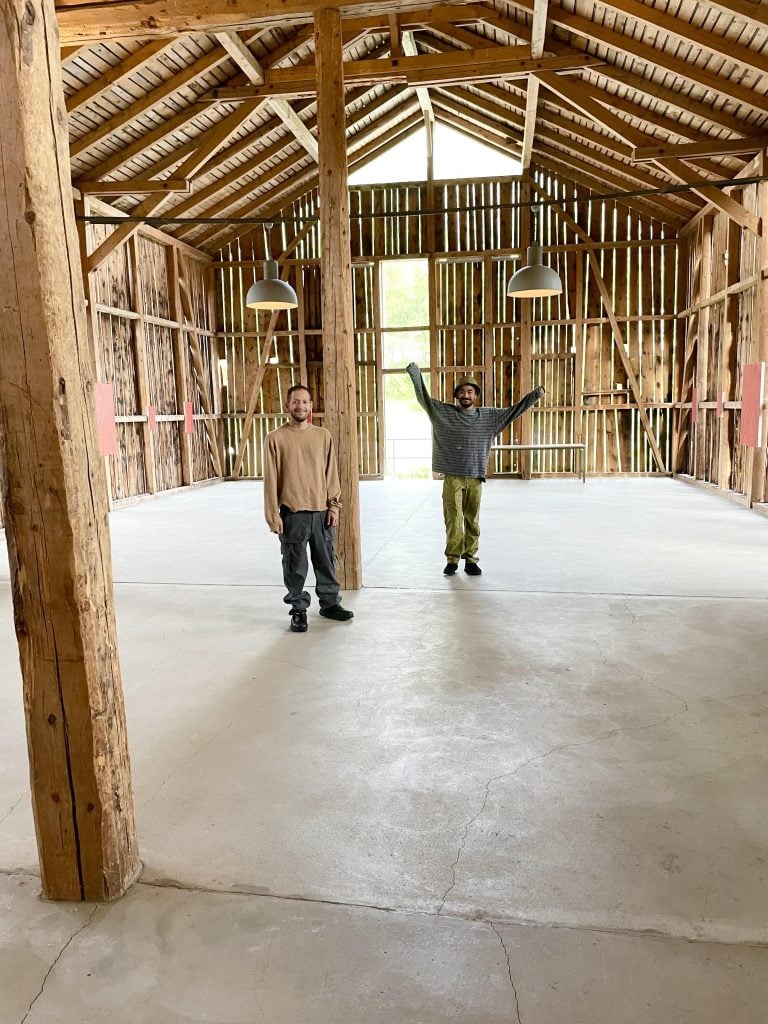
Barn animals Adrian Schachter and Lucien. Courtesy of Kenny Schachter.
What’s the show in St. Moritz? How did it come about?
The show is titled “Freedom in Failure” and it’s being put on by a mutual friend of your son Adrian and mine, Fritz Steinhart. The space he’s currently operating is called the Stable, a few minutes north of St. Moritz in a village called S-chanf.
Which living artists do you admire? Which dead ones? Why?
I can find a little something to admire in any artist. Of the living, or do you mean of the known? I admire the younger artists I have gotten to meet—they’ve come into a world where the veil has been lifted. Known living artists? I really enjoyed Lucian Freud when he was alive. I’d have to say Schnabel, perhaps. For me, I admire artists for their story not just their work. Of living artists? There are many great ones, but their lives, their stories I find unmemorable.
What artists to you admire, Kenny?
Paul Thek, Vito Acconci, Tracey Emin, and Cady Noland. Where do you want to be in five years?
I like where I am. I guess if I can sustain this it would be enough for me.
What would you like to change about art world?
I’d like to turn it upside down.
What do you most love about art world?
The art… duh.
What do you think about NFTism? Have you minted any yet? If so, how’d it go? If not, will you?
I have. I think they’re great. They are the urinal of our time. But what is really remarkable is blockchain technology. NFTs are just the hook, line, and sinker.
Do you have a mentor?
I don’t, but I’ve taken inspiration from some. I look up to Bobby Fischer, Howard Hughes, Roger Baldwin [founder of the American Civil Liberties Union], and Werner Herzog.
Have you ever taught? Would you?
I answer a lot of DMs from aspiring artists. I would love to teach but for now I can just lead by example.
What on earth is “Save the People”? Don’t we each need to focus on saving ourselves?
Serving the People! LOL. Helping people around me helps me live a better life. Serving the People is an organization I founded in 2014 that gives back to creative communities.
When did you first have idea for a nonprofit? What are your goals for STP?
It started it around 2013 when I began to fall out of love with art. In a way, STP helped me find focus and something more socially conscious than just my practice. Our goal is to create a healthier environment for artists. We are currently working on a for-profit marketplace that i believe will help us achieve this goal and fund the nonprofit entirely.
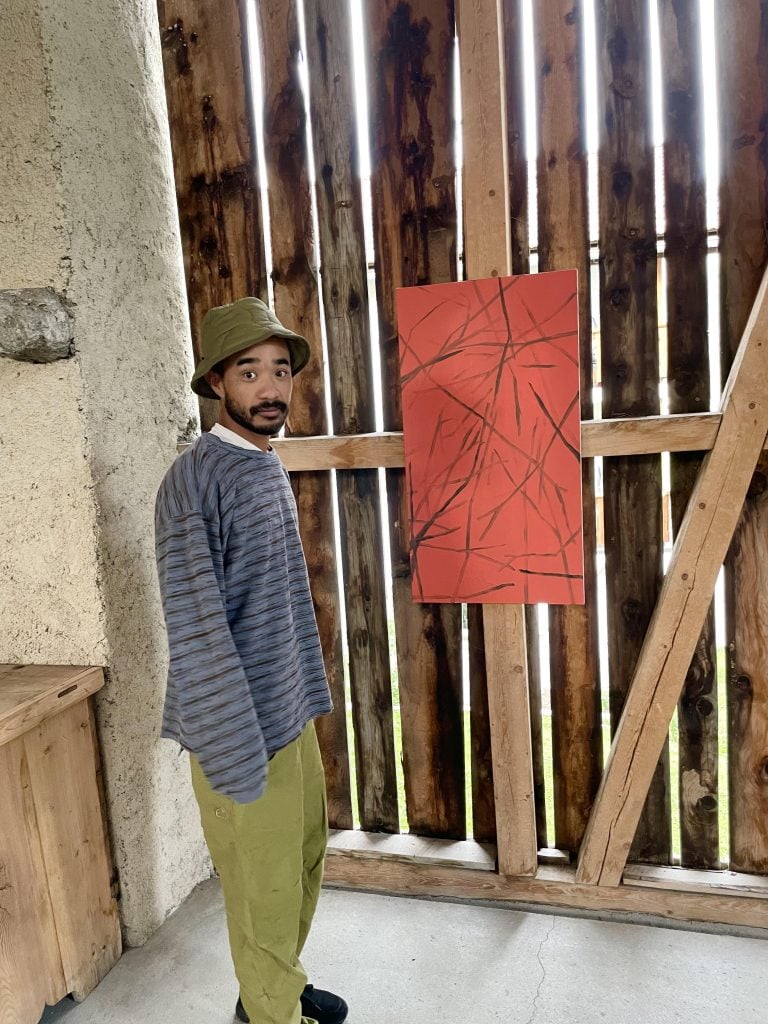
Lucien and his new work in the Stable. Courtesy of Kenny Schachter.
How much have you raised? What are your projects now and in the near future?
I’m horrible at asking for money. Most of what we have raised I have put in myself from my practice—why, are you looking to invest? We’re in a fundraising stage right now. We’ll happily take anyone’s money and do good with it.
Do you think the not-for-profit route is something you’d like to see other artists pursue?
Yeah, in a way. I started STP so that artists could use it for that purpose and not go through that laborious process of filing for a 501(c)(3), but, yeah, I think most artists possess a sort of caring nature for society and culture. Giving them outlets besides their art to help better the world I think is a no-brainer.
Can true altruism ever really exist or is it just more ego cloaked in do-goodism?
I think it definitely exist. Especially because most people think I’m crazy to give so much of my time to something like STP instead of just profiting from my art. I get very little do-goodism pats on the back these days and it’s still worth it.
How did you go from Cooper Union to the poster child of art excesses of the Zombie Formalism market heyday?
Great self-promotion.
Can you explain the alchemy of being anointed a market sensation?
I think people in the right places were able to see the potential I possessed at an early age. And, for the most part, greed helped create such a market spectacle around my work. So, potential and greed.
How has the art world changed since you have been out of school?
Everyone’s just a little older. They were already old to begin with.
How has your art world changed since you began making art?
I don’t really have an art world. It’s funny checking in on fairs and such and seeing all the silly commotion. I will say I miss it sometimes. Art has taken me all over the world and allowed me to meet some amazing and sometimes not-so-amazing people.
What were your thoughts, impressions, and recollections of that period?
It was just very overwhelming. I definitely got what I wished for, but my wish was not the most responsible.
Do you miss it?
Occasionally. I mean, I’m much happier where I am. It’s easier when people don’t expect anything from you.
When the merry-go-round came to screeching halt were you bummed? Shocked? Had you expected anything like that to eventually happen?
I mean, I knew it was unsustainable. Luckily I put my earnings in the right places so I would be comfortable. I was playing a tennis match and losing the first set 5-0. I decided to save my energy for the second set. I’m ready to play ball again.
When your Winnie the Pooh painting, a work from your school days, first appeared at auction and hit $400,000, were you surprised? I heard you knew the seller and they kind of engineered that it would do well. Can you comment?
I knew the sellers, but doubt they were clever enough to put anything like that into play. Someone asked me before that auction how much I thought the painting was worth… I said a million. So it was a steal. I think it should be worth twice that now.
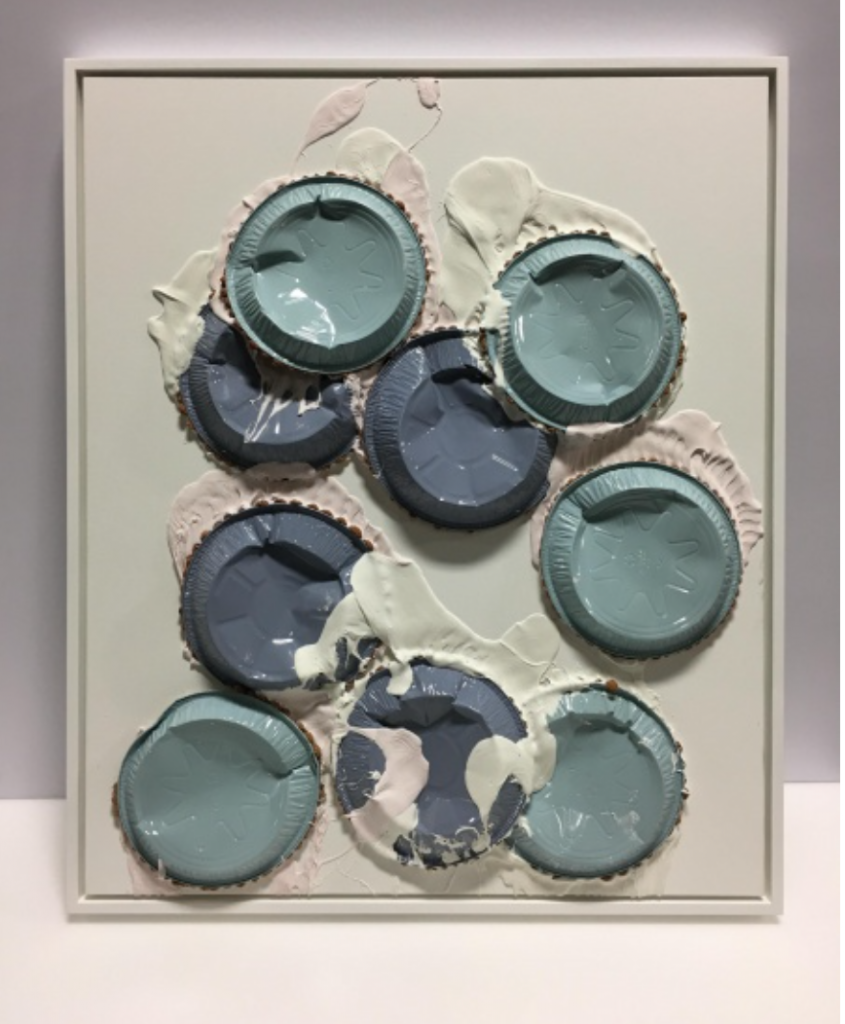
Pie in the eye! Lucien’s finest homemade baked goods. Courtesy of Kenny Schachter.
I’m nuts for your pie paintings. What inspired them? And the fire extinguisher works?
I was supposed to do a project with Claes Oldenburg that fell through. Those works were made for that show. For me they were in some way a response to Richard Prince’s joke paintings—a slapstick gesture. All the titles of the pie paintings are wacky news headlines.
The rain paintings were my first works out of college. I moved into James Ivory’s barn in upstate New York by chance. It was just a random craigslist listing. I spent a year up there with all this outdoor space, and my knowledge of graffiti tools—such as the repurposed fire extinguisher—and the outdoor space at my disposal cultivated the opportunity to make those works. For me, they always represented the feeling of being encapsulated in an emotion. I wanted the viewer to feel like they were stepping into something when they were in front of them. The titles for the most part come from ’80s and ’90s rom-coms and love fortunes.
You mentioned you were cooking up some more pies. Why go back? Will you squirt out any more extinguisher works anytime soon too?
Like I mentioned, I never had an official exhibition for the pies. That’s how it was back then—I’d sell out of works before getting a chance to even sign them. My first idea was to just gather a bunch of old ones for an exhibition, but I don’t have the nerve to deal with those logistics. A buddy of mine has been begging me to do a pie painting show in New York. I finally caved. I think we’ll have a charitable pie eating contest and a new large abstract. You wanna participate? If you win I’ll give you free pie. As for more rains… doubtful. There’s 180 of them… there I said it. I would say about 100 of them are the small ones. The art world always criticized me for making too many… but I think Damien Hirst made well over a thousand dots? The rain paintings are solidified in art history. For better or worse, I think they’re the most infamous paintings ever made besides the shot Marilyns.
What do you think of the art market?
It’s like any market but no rules.
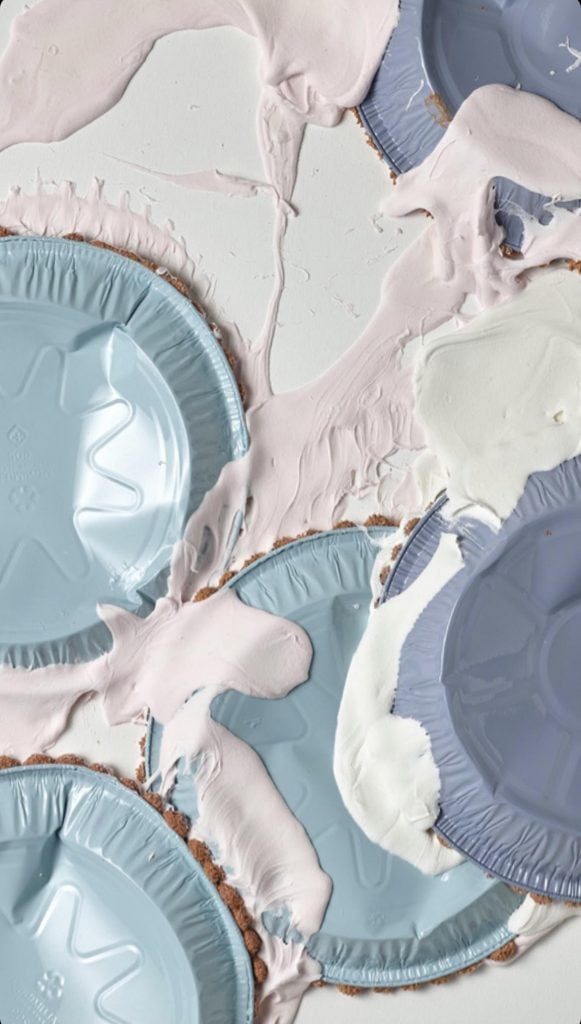
Slapstick art—remember Soupy Sales? Lucien’s pie paintings coming back for a second helping. Courtesy of Kenny Schachter.
There was an infamous rant by your dad he posted on YouTube—have you made amends? Was there a specific falling-out?
We have, as much as we can at the moment. It’s tough being someone’s son. I’d rather just be me.
How old are you? What was your childhood like and where did you grow up?
I’m 32. I grew up all over America. Nothing really the special about it. I was an underachiever and pretty mediocre in most fields. All except art, which I always excelled in.
What did/do your parents do for a living?
My mom is a clothing designer. She’s worked all over. I have a project with her called Vivien Ramsay now.
When did you know you wanted to make art for a living?
Probably my second year at Cooper Union. I was broke. I would steal change from my roommates’ pockets for food and was living off $60 a week.
What’s your favorite color?
I like color combinations. It’s like asking someone their favorite alcohol—you’ll get a better answer if you ask for their favorite drink. I like purple and green together, and orange and red.
What will you be remembered for?
If I died today? Probably for being a fuck up.
Are you in a relationship?
I dunno, I have to ask her.
What does art mean to you?
It’s a vestibule for whatever you want it to be.
I used to write quite a lot of satirical words about you and your meteoric career, which seemed more to do with the greed of the flipperati than your art. What did you think of me during that period?
I didn’t understand because you also collected my work, so I was confused. I didn’t take it that personally. I’m used to people criticizing me, yelling “Zombie Formalist” at me when I’m at dinner with my family. Comes with the job, I guess.
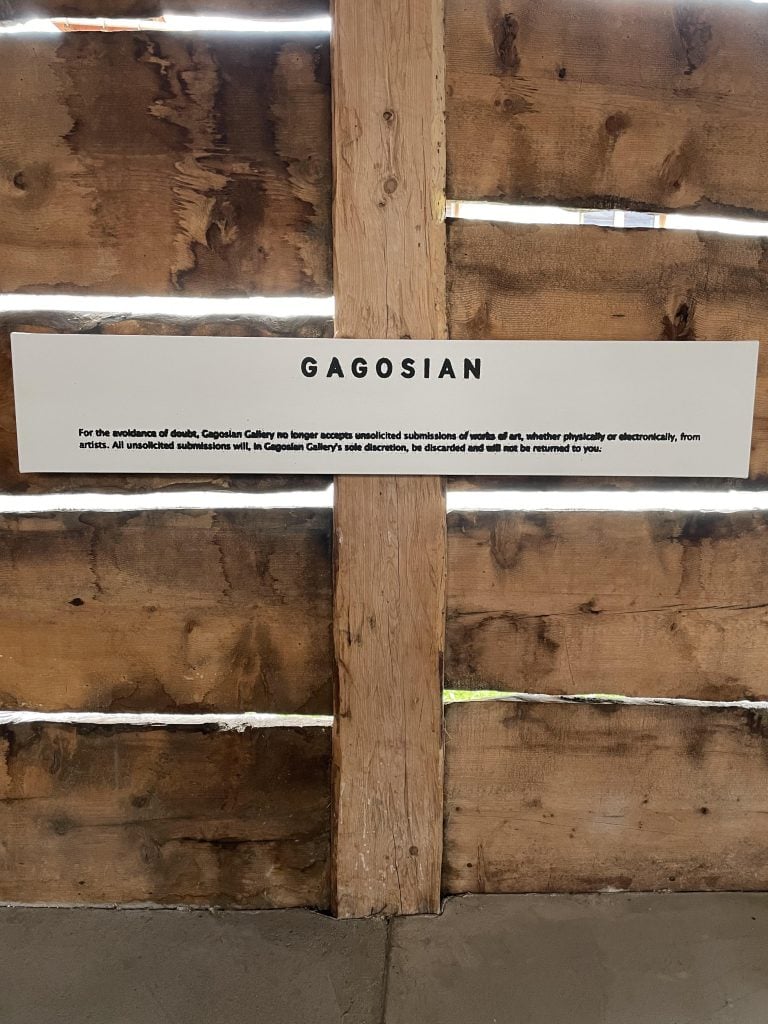
Umm, thanks but no thanks, Gagosian doesn’t take kindly to unsolicited materials. Courtesy of Kenny Schachter.
I awoke from a blackout some years ago and had a vague recollection that we kissed—did we? Why on earth did we do that? The world is a safer place now. I’ve been sober two and a half years. Do you drink? Do drugs?
That’s my way of saying I like you. I’m a chronic relapser. I shouldn’t drink or do drugs. If you’re reading this, don’t give me drugs if you see me. Give me hugs.
What’s next? What is your five-to-10-year plan?
Stay alive long enough to be the G.O.A.T.
Tell me about the works in you St Moritz show!
The whole show is wrapped around this idea that for every failure there lies an opportunity for success. I suffer from severe OCPD. I thought it was getting better, but it’s actually getting worse. Just the other day I found something wrong with my haircut so I shaved my head. I also burned a pair of shoes in my fire pit because I couldn’t stand the way they looked any longer. With my work I have always been very calculated and controlled. I can’t stand arbitrary mark-making in paintings. I find the works of, say, Oscar Murillo to be nauseating. Calculated but arbitrary marks I can’t get behind it—it feels decorative in a sense, soulless. That’s why everything I’ve ever painted I can some way or another visualize beforehand on the computer, or theoretically. I think this sense of control has held me back from really painting.
The paintings in this recent show are a continuation of a small series of paintings depicting thorn branches. I believe all art is an endless journey, and one merely chooses to stop or take a detour. After I showed the thorns in a charity show for STP titled “Beast of Burden,” I decided to continue developing them. The brush strokes became much looser, less contrived, more painterly. I merely apply marks to balance other marks to create some harmony. In a sense, they still give off this feeling of nature, forests. I feel my own failures and shortcomings as an artist have led to new opportunities—the idea is that we are all trapped in our own little forests, that we don’t know what exists outside of these forests. Some of us may think we do, but only until we arrive at the edge does the destination reveal itself.
Follow Artnet News on Facebook:
Want to stay ahead of the art world? Subscribe to our newsletter to get the breaking news, eye-opening interviews, and incisive critical takes that drive the conversation forward.






